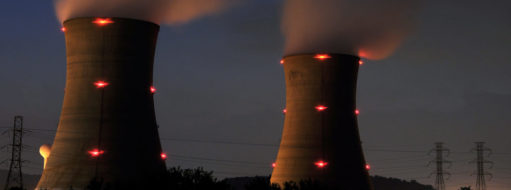
27 Sep 2016 Moving Forward with Consent-Based Siting for Nuclear Waste Facilities in Energy and Environment
BPC Action pushes for the enactment of energy policy that allows the U.S. to harness its energy abundance to ensure affordable, secure, clean and reliable energy sources. We encourage development of policies that take advantage of a wide variety of energy sources, including clean energy innovation, oil and gas, nuclear energy, and electricity. The following information is from BPC, our 501 (c) (3) affiliate.
For decades, the United States has been grappling with the problem of what to do with the tens of thousands of tons of spent nuclear fuel and high-level radioactive waste generated by the nation’s commercial nuclear power industry and defense programs. Despite many efforts by the executive branch, Congress, industry, citizen groups and others—and despite the expenditure of billions of dollars, the United States still has no workable, long-term plan for permanently disposing of these wastes.
Meanwhile, the federal government’s financial liability for failing to meet its contractual obligation to accept spent fuel from the nation’s commercial nuclear power reactors—a liability that is already in the billions of dollars—increases with every year of continued paralysis and delay.
The United States still has no workable, long-term plan for permanently disposing of nuclear waste.
Launched by the Bipartisan Policy Center in 2014, the Nuclear Waste Council seeks to expand national and regional conversations on nuclear waste and to develop policy options that ultimately could lead to an implementable nuclear waste strategy. In the first phase of its work, the council convened five regional meetings across the United States. Each meeting included a private discussion among key stakeholders, chosen for their broad representation and varying perspectives on the nuclear waste issue, and a public event that provided an opportunity to hear local and regional concerns.
The objective of these meetings was to identify barriers to solving the nuclear waste problem and explore options for overcoming these barriers. Each meeting also provided an opportunity to focus on specific topics of particular interest to local groups and the host region (for example, stranded spent fuel in California and New England; the management of defense waste in the Southeast and Northwest; and waste transportation issues in the Midwest).
This report is the culmination of the second phase of the council’s activities. It provides an update on recent developments in the nuclear waste policy arena, including relevant legislative proposals, court decisions, and current federal efforts to launch a new consent-based siting process. This report also summarizes insights from experience with other hard-to-site facilities; results from a survey, conducted by BPC, that was designed to solicit the views of state officials on a range of issues related to siting nuclear waste facilities; and input from a regional stakeholder meeting with members of communities that are considering hosting new private nuclear waste management facilities. The report concludes with recommendations intended to help advance a new approach to siting nuclear waste facilities and spur renewed efforts by all parties to find durable solutions for managing and safely disposing of these materials.
It is important to note at the outset that the council did not debate and has not taken a position or developed a recommendation on whether or how to proceed with efforts to license a geologic nuclear waste repository at Yucca Mountain. Some members of the council take the position that the Yucca Mountain licensing process should go forward, even though it is not consent-based. Other members have reached the same conclusion as the Obama administration: that the Yucca Mountain site and licensing process are unworkable and that a new strategy is needed to identify and develop a permanent geologic repository for spent nuclear fuel and high-level radioactive waste.
The nation’s existing inventory of spent nuclear fuel and waste already exceeds the quantity that could be disposed of at Yucca Mountain.
As a group, the council concurs with the Blue Ribbon Commission on America’s Nuclear Future that a fundamental overhaul of the U.S. nuclear waste management program is required and that a different approach should be taken to site future waste management facilities, regardless of the fate of Yucca Mountain. The nation’s existing inventory of spent nuclear fuel and high-level radioactive waste already exceeds the quantity that could be disposed of at Yucca Mountain under current statutory limits. And other critical elements of a robust, integrated waste management system—including facilities for the consolidated storage and transport of these materials—will face similar siting challenges in any case. Most importantly, no resolution of the Yucca Mountain controversy will erase the record of management failures and the loss of trust that have brought the nuclear waste program to its current state.
For all of these reasons, we believe a new path forward is needed. This will not be possible without congressional action on legislation that changes the current regulatory and statutory framework for managing and disposing of nuclear waste in the United States.
